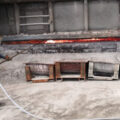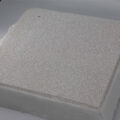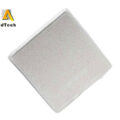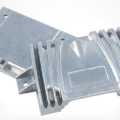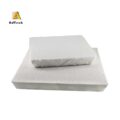The use of aluminum alloy castings is increasing, and the requirements for castings are becoming higher and higher. In addition to ensuring chemical composition, mechanical properties and dimensional accuracy. The aluminum alloy castings are not allowed to have casting defects, such as shrinkage holes, air holes, and slag holes. Liquid aluminum purification treatment is one of the measures to ensure high-quality aluminum alloy products. And it is also the main means to improve the overall quality of aluminum alloys. The refining effect of the aluminum liquid has an important influence on the formation of pores, shrinkage holes and inclusions. And it directly affects the physical and mechanical properties of aluminum alloy castings. AdTech aluminium filtration and degassing equipment can achieve the effect of removing impurities and degassing, so as to improve the overall quality of aluminum.
Without high-quality aluminum liquid, high-quality castings are difficult to obtain. Even if the subsequent treatment is advanced, once the defect is generated, it will always exist in the product. Therefore, we must pay attention to the gas and inclusions in the aluminum liquid, and take measures to remove the gas and inclusions in the aluminum liquid.

Importance of Aluminium Filtration
The aluminum liquid contains various impurities, so it needs to be purified before casting. The industry mainly adopts purification methods such as clarification, flux, gas, etc.
The gas in the aluminum liquid is mainly hydrogen (approximately 80% -90%). Hydrogen is almost insoluble in solid aluminum, but it is very soluble in liquid. The normal hydrogen content per 100g of molten aluminum is 0.1-0.4mL. Because of the different solubility, hydrogen tends to escape from the melt. When the pressure of hydrogen is greater than the surface tension and the hydrostatic pressure, bubbles are formed, which in turn creates pinholes in the casting. Therefore, in terms of aluminum alloy melt purification, the main problem is that the aluminum alloy has a high hydrogen content. And the existing methods cannot meet the production requirements of high-quality aluminum alloy castings.
Generally, the hydrogen content per 100g aluminum can basically meet the production requirements when it is 0.1 ~ 0.2mL. For the castings with special requirements (such as aviation castings), the hydrogen content per 100g aluminum should be less than 0.06mL. Common non-metallic impurities in aluminum liquid are oxides, nitrides, carbides, borides, etc. Most of them exist in the form of particles, and the typical particle size ranges from 1-30 μm.
There is a strong interaction between the inclusions and the gas in the aluminum alloy. The hydrogen content is greatly affected by the inclusions. When the inclusion content is 0.002% and 0.02%, the corresponding hydrogen content is 0.2mL / 100gAl and 0.35 mL / 100gAl. In the case of the same hydrogen content, the higher the content of inclusions, the higher the pinhole rate. On the contrary, when the impurity content in the molten aluminum is very low, the hydrogen content is also very low. Therefore, it is equally important to remove impurities and degas simultaneously.




